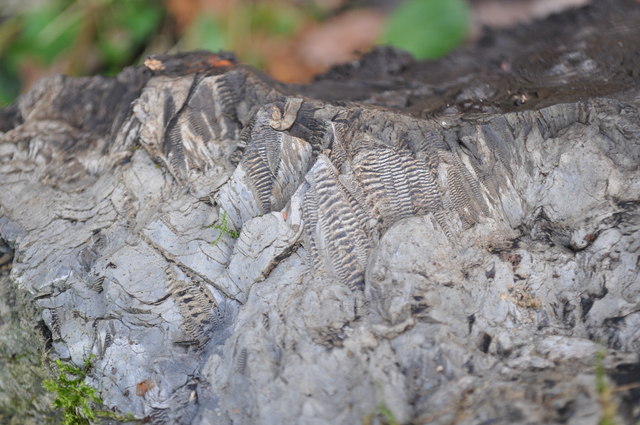Duckmanton Railway Cutting - Cone in cone features
Introduction
The photograph on this page of Duckmanton Railway Cutting - Cone in cone features by Ashley Dace as part of the Geograph project.
The Geograph project started in 2005 with the aim of publishing, organising and preserving representative images for every square kilometre of Great Britain, Ireland and the Isle of Man.
There are currently over 7.5m images from over 14,400 individuals and you can help contribute to the project by visiting https://www.geograph.org.uk

Image: © Ashley Dace Taken: 19 Mar 2011
An in float sample, at first presumed to be leaves but I have been informed they are more likely cone in cone features (see below). The SSSI is often used by geology groups and schools, hence samples like this are left by them for others to enjoy. I have a picture with a scale bar if you wish to see it. The identification of the Duckmanton Railway Cutting, as fossil plants, may be incorrect. To me by looking only at a photo, this looks like "cone-in-cone", a sedimentary feature that commonly occurs in clay type lithologic units, like shale. Cone-in-cones are the result of the clay layer being compressed by the overburden. The horizontal lines that make it look like a plant leaf are somewhat akin to microfaulting as the clay compresses; part of the layer slips away from the point of compression. Cone-in-cones will occur on the top and bottom of shale layers (on top they point up and bottom point downward). As these cone-in-cones weather and fall from the layer, they are conical in shape and sometimes mistaken for dinosaur teeth. Another similar feature is shatter cones found in meteor craters. The points of the shatter cones point toward the meteor's angle at impact, the source of the compression [For example the Sudbury Ni-Cu ore deposit in Ontario, Canada - Ashley]. Many thanks to B.Beasley for this:

